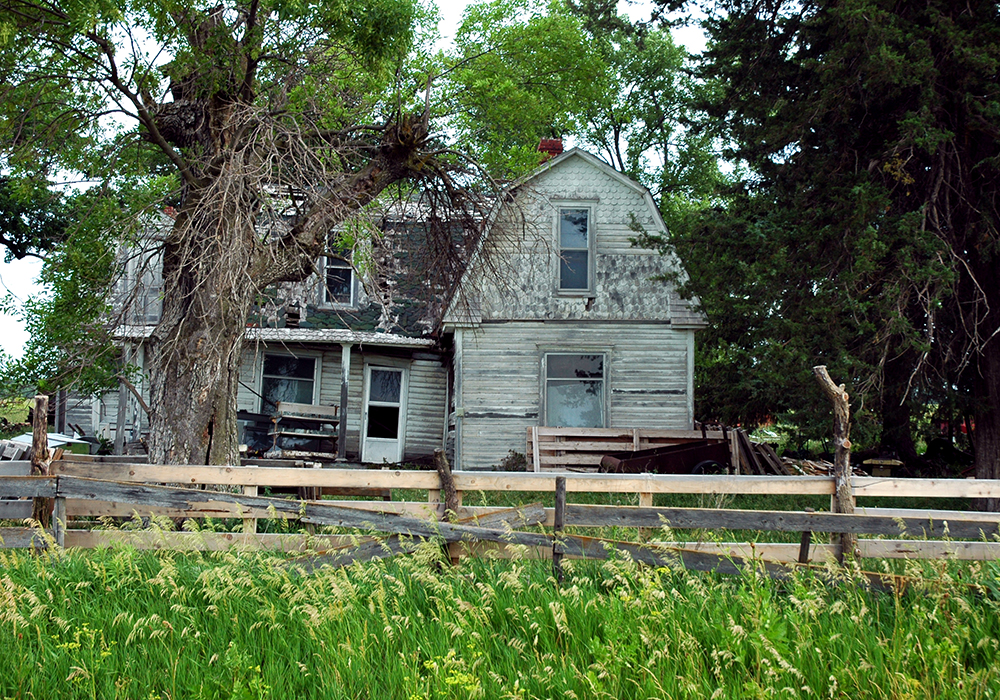It is a chilly autumn morning as you wander through the tall grass, feeling the crunch of fallen leaves underfoot. The fog is lifting, and a timeworn farmhouse stands just beyond the trees. Weathered boards, peeling paint, and crooked shutters hint at decades—perhaps even centuries—of history within its walls. This old farmhouse was once a thriving hub where generations of a family lived, worked, and gathered around a single, wood-fired stove. Today, it sits empty, its silent rooms holding the echoes of laughter, hard work, and everyday life. However, while some see only an abandoned building, others see potential—a piece of heritage waiting to be restored and cherished again.
old farm house across the United States and beyond are experiencing a resurgence of interest as people look to reconnect with history and embrace a simpler, more grounded lifestyle. In this article, we will explore the unique allure of old farmhouses, dig into surprising statistics on their growing popularity, discuss the challenges and joys of restoring these homes, and reflect on why these architectural relics capture modern imaginations.
The Historical Significance of Old Farmhouses
old farm house were once a central part of rural America’s landscape, built to serve as homes and working spaces for families living off the land. Dating back to the 18th and 19th centuries, these houses were constructed using local materials and traditional methods. Their designs were straightforward and functional, usually featuring large kitchens, spacious porches, and simple floor plans that accommodated family life and communal gatherings.
Many old farm house are architectural gems, showcasing regional building styles. For example, New England farmhouses often feature steep roofs and wood shingles to handle harsh winters. In contrast, southern farmhouses are likelier to have large wraparound porches designed to offer shade and ventilation in the summer heat (National Trust for Historic Preservation, 2021). Each region has its farmhouse style, reflecting the climate and the available local materials.
The Resurgence of Interest in Old Farmhouses
In recent years, there has been a significant increase in interest in old farmhouses, both for their aesthetic appeal and as part of a growing movement towards preservation. According to a study by the National Association of Realtors (NAR), searches for old farm house or “historic farmhouse” rose by 32% between 2019 and 2022, reflecting a rising desire among homebuyers to invest in historic properties (NAR, 2022). This interest is more comprehensive than in rural areas; many suburban and even urban buyers seek opportunities to own a piece of history and bring it back to life.
The rise of social media platforms like Instagram and Pinterest has also fueled the popularity of old farmhouses. These homes have become beloved subjects in home design and renovation content, where people share their restoration journeys, often highlighting the unique quirks and details of these structures. The hashtag #farmhouserenovation alone has over a million posts on Instagram, showcasing everything from quaint farmhouse kitchens to carefully restored barns and outbuildings.
Additionally, the COVID-19 pandemic accelerated interest in rural and suburban properties as more people sought spaces outside crowded urban centers. With remote work becoming more mainstream, many people took the opportunity to move to quieter areas, and old farmhouses offered both space and character. According to Zillow, rural and suburban home sales saw a 20% increase in 2020 and 2021, with a marked preference for properties with historical charm (Zillow, 2021).
Critical Reasons Behind the Allure of Old Farmhouses
What draws people into these old farmhouses beyond mere aesthetics? There are several reasons why these homes resonate with modern buyers.
- A Sense of History and Authenticity: Owning an old farm house allows people to connect with the past tangibly. Each scratch on the wood floor and mark on the wall tells a story. For many buyers, these homes offer a break from modern construction’s “cookie-cutter” feel, providing a unique sense of place and identity.
- Sustainable and Eco-Friendly Living: Many people are attracted to restoring old buildings rather than building new ones, which can be more sustainable. Reusing an existing structure reduces the need for new materials and preserves historical architecture. According to the American Institute of Architects, adaptive reuse projects like farmhouse restorations save an average of 50% more materials than new builds and often have a lower environmental impact overall (AIA, 2020).
- Space for Family and Lifestyle: old farm house are often larger than modern homes, with ample land surrounding them. This appeals to people looking to start hobby farms, grow gardens, or enjoy outdoor space. The layout of these homes, with large kitchens and gathering spaces, also suits a lifestyle focused on family and community.
- Creative Renovation Opportunities: old farm house often require renovation, allowing homeowners to create a truly customized space. Many buyers enjoy the challenge of updating a historic home, blending modern amenities with vintage charm. This creative process can be advantageous, as homeowners put their stamp on a historic property.
The Challenges of Restoring an Old Farmhouse
Restoring an old farmhouse, however, is challenging. Many of these homes have been sitting empty for years, sometimes decades, and require extensive repairs. Here are some of the common hurdles involved:
- Structural Issues: old farm house may have foundation problems, outdated wiring, or other structural issues that must be addressed before they are safe to inhabit. According to data from the National Trust for Historic Preservation, structural repairs can account for 20-30% of total renovation costs for historic homes (National Trust for Historic Preservation, 2021).
- Cost of Renovations: The charm of original woodwork and hand-built stone walls often comes at a price. Many materials used in old farmhouses are no longer widely available, so finding replacements or making repairs can be costly. A 2020 survey from Houzz found that historic home renovations cost, on average, 15% more than renovating a modern home, mainly due to the specialized labor and materials required (Houzz, 2020).
- Energy Efficiency: old farm house often lack insulation, have drafty windows, and may rely on outdated heating systems. Retrofitting these homes to be energy-efficient without sacrificing their historic character can be challenging. However, grants and incentives are available in many states to assist with making older homes more eco-friendly as part of a national push toward green restoration projects (US Department of Energy, 2021).
- Navigating Historical Preservation Guidelines: Many old farmhouses are designated historic properties, meaning they come with preservation guidelines that restrict the types of modifications that can be made. This can limit renovation options, although it also helps protect these properties’ character for future generations.
Why Old Farmhouses Are Here to Stay
Despite these challenges, the appeal of old farm house is enduring. As society becomes increasingly digital and fast-paced, people seek experiences and spaces that feel real, grounded, and connected to the past. old farm house represent an antidote to modern life—a place where people can slow down, engage with history, and live more sustainably.
Moreover, the trend toward farmhouse restoration will likely continue, supported by both the real estate market and cultural shifts toward valuing heritage and craftsmanship. A 2022 report by Realtor.com suggests that homes built before 1950 have appreciated an average of 6% annually over the past decade, compared to 4% for homes built after 2000 (Realtor.com, 2022). This increase reflects the demand for historic homes and the growing value placed on preserving the past.
Conclusion: A Legacy Worth Preserving
old farm house are more than just homes—they are legacies. Each one represents a chapter of history, a reflection of the people and times that shaped it. By restoring these homes, modern buyers are not just creating a unique living space but also preserving a piece of cultural heritage. In a world where trends come and go, the old farmhouse stands as a timeless icon of resilience, beauty, and simplicity.
As more people embark on the journey of farmhouse restoration, they contribute to a broader movement of honoring the past while shaping the future. Whether perched on rolling farmland or nestled in a small town, old farm house remind us that sometimes, the best way forward is to look back.











